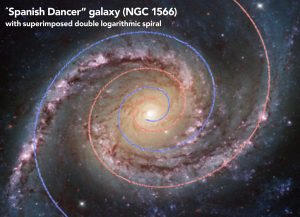Your favourite articles of the year: #BehindTheResearch2022
Welcome to #BehindTheResearch2022! We’re showcasing researchers whose articles have made a significant impact in a curation of Research Outreach’s top-trending articles of the year! Read on to find out which researchers are in the top five most-read articles of 2022.
In the year-in-review blog, we find out how Timothy Arnett has developed a fuzzy logic-based artificial intelligence and machine learning tools for uncrewed vehicles. We report that a team of researchers are mapping our biogeographical ignorance. Excitingly, Professor Chris Jeynes has found a new thermodynamics approach based on a groundbreaking geometrical understanding of entropy. We also discuss the findings of Dr Alexandra Youmans and Dr Lorraine Godden, who researched how staff professional development can aid Adult Education outcomes. Finally, in our most-viewed article of 2022, we find out about a new feed tube for children who struggle to eat due to illness. Dive into Behind the Research – and celebrate the success of researchers this year around the world.
The results are in…
| Behind the Research 2022 |
|---|
| Rank | Article | Behind the Research |
| 1 | Facilitating open discussions: New guidelines for paediatric blended diets | A team of researchers at Nestlé Health Science UK launched a paediatric tube feed to help meet the nutritional needs of children unable to eat and drink safely. |
| 2 | Improving the safety of unmanned aerial systems: A fuzzy logic–AI approach | Timothy Arnett develops fuzzy logic-based artificial intelligence and machine learning tools for uncrewed aerial vehicles. |
| 3 | Accounting for biogeographical ignorance within biodiversity modelling | Joaquín Hortal, Richard J Ladle, Juliana Stropp, and Geiziane Tessarolo developed the first Maps of Biogeographical Ignorance, a tool that accounts for uncertainty in big-data biodiversity analysis. |
| 4 | How geometry expresses the Second Law of Thermodynamics | Professor Chris Jeynes has found a new thermodynamics approach based on a groundbreaking geometrical understanding of entropy. |
| 5 | Change agents: Professional development for adult educators | Dr Alexandra Youmans and Dr Lorraine Godden document Adult Education Strategy in eastern Ontario, Canada. |
Change agents: Professional development for adult educators
How can the professional development of staff be used to bring about lasting change in adult and continuing education (A&CE)? That’s the question behind new research from Canada led by Dr Alexandra Youmans of Queen’s University, Kingston, Canada, and Dr Lorraine Godden of Carleton University, Ottawa, Canada. They look at how school boards in eastern Ontario have come together to meet the demands of the province’s three-year Adult Education Strategy. The strategy aims to promote collaboration between school boards to increase accessibility to adult education and improve outcomes for adult learners.

How geometry expresses the Second Law of Thermodynamics
Physicists have long struggled to explain how the inevitable increase in the universe’s entropy can be reconciled with the reversible laws of quantum mechanics. Now, Professor Chris Jeynes at the University of Surrey Ion Beam Centre, UK, believes he has found a solution in geometry. This new geometrical thermodynamics shows how the stability in a time of structures as diverse as atomic nuclei, the DNA helix, and spiral galaxies can be explained as a natural result of systems adopting their maximum possible entropy configuration, even as the universe evolves over time.

with superimposed double logarithmic spiral
Accounting for biogeographical ignorance within biodiversity modelling
Biodiversity data can be analysed to predict species distribution at various scales of time and space. However, survey completeness and temporal decay in data quality introduce uncertainty into biodiversity models. Researchers Joaquín Hortal, Juliana Stropp (National Museum of Natural Sciences, Spain), Richard Ladle (University of Porto, Portugal), and Geiziane Tessarolo (State University of Goiás, Brazil), among others, are constructing the first Maps of Biogeographical Ignorance (MoBIs) that account for uncertainty in biodiversity analysis. Presented alongside species distribution models (SDMs), MoBIs ensure conservation resources are appropriately distributed.
Improving the safety of unmanned aerial systems: A fuzzy logic–AI approach

With their ever-increasing capabilities and applications, the use of uncrewed aerial systems (UAS) is set to soar. This creates an urgent need for solutions that safely manage UAS operations in congested low-altitude airspace. Some advanced UAS-control methods are based on reinforcement learning techniques, but these still need to be fully validated. Taking a fuzzy logic-based approach to this problem are Dr Timothy Arnett and colleagues at Thales Avionics Inc, USA. The team is developing important and safe standards for implementing AI-controlled UAS.
Facilitating open discussions: New guidelines for paediatric blended diets
Homemade blended diets are becoming more popular in children with long-term feeding tubes. Due to the challenges and intricacies of a blended diet, open discussions and multidisciplinary team working is crucial if we are to ensure consistency and plan for the best outcomes for the child and family. In 2020, Nestlé Health Science UK launched a paediatric tube feed containing food-derived ingredients to help children who can’t eat due to illnesses. Here, we re-visit Compleat® paediatric and reflect on the progress made over the last couple of years.